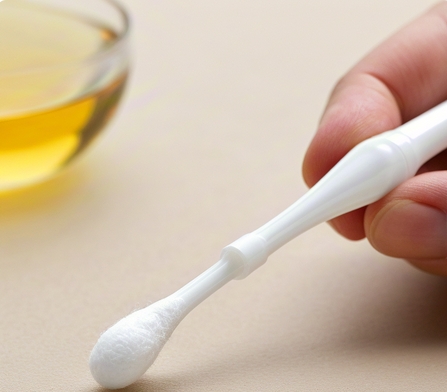
News and Blogs
Correct use of throat swabs: 3 steps to improve the accuracy of microbial detection
Clinical application and pathogenic analysis of throat sampling swabs
As an important tool in the diagnosis of respiratory diseases, throat sampling swabs play a key role in clinical microbial detection. This special medical device can effectively obtain biological samples required for bacterial culture, virus isolation and DNA detection by standardizing the collection of secretions at the throat. According to research data from the Journal of Clinical Microbiology in 2023, the diagnostic accuracy rate of correct use of throat swabs can reach more than 92%.
1. Analysis of the diagnostic value of throat swabs When pathogenic microorganisms are detected, the results of throat sampling swabs can be used as an important basis for confirming respiratory infection. In clinical practice, comprehensive judgments are often made in combination with imaging examinations (such as chest X-rays and CT scans). For example, in acute pharyngitis cases, about 60% of beta hemolytic streptococcal infections can be detected quickly by swab culture. It is worth noting that if the culture results show that yeast-like proliferation often suggest antibiotic abuse, the treatment plan should be adjusted immediately and the use of antifungal drugs such as amphoteric in B.
2. Analysis of common pathogen types 1. Gram-positive bacteria: including Staphylococcus aureus (detection rate is about 35%), Streptococcus pneumoniae (accounting for 40% of community-acquired pneumonia), Corynebacterial diphtheria (diphtheria pathogen) and Candida. Among them, β-hemolytic Streptococcus is the main pathogen of supportive tonsillitis.
2. Gram-negative bacteria: covers Nasser meningitis (a pathogen of meningitis), Bacillus pertussis (a pathogen of pertussis), Pseudomonas aeruginosa (a common bacterium infected in hospital), etc. It is worth noting that the detection of tuberculosis can directly diagnose tuberculosis.
3. Anaerobic bacterial flora: About 30% of chronic pharyngeal infections are related to anaerobic microorganisms such as digested streptococci. This type of pathogen often forms biofilms, posing a special challenge to antibacterial treatment.
3. Guiding significance of clinical testing. Microbial analysis of throat sampling swabs provides direction for precise treatment. For example, when Corynebacterial diphtheria is detected, antitoxin treatment is required immediately; if drug-resistant Staphylococcus aureus (MRSA), special antibiotics such as vancomycin should be selected.






